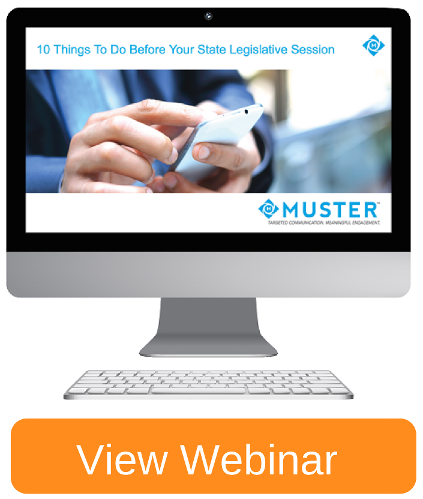No matter the staff size, budget or interstate reach, every association seeks to keep its membership actively engaged in its mission. In terms of advocacy, an engaged membership means a strong network of advocates when the legislative sessions begin- and a much easier process for the association to activate its membership when navigating policy challenges. Many members want to be actively engaged in their association and want to participate in advancing policy goals, they just don’t know how. It’s the duty of the association to keep close contact with its members and provide them with actionable ways, like Calls to Action and email updates, that let them participate in the legislative process. After working closing with CEOs and directors of membership-driven organizations, we’ve found that keeping members engaged is strongly dependent on the following action items:
Cultivating an Advocacy Mission Statement
Unlike many non-profit 501c(3) organizations, professional associations and other 501c(6) groups frequently struggle with crafting a compelling advocacy message that extends beyond the reach of their membership- and that is okay. The power of association advocacy lies in the unified voice of the membership, not always from grassroots support. Even if governmental advocacy is not an explicit component of the association’s daily agenda, reminding members of the association’s general policy mission is important on a year-round basis. This can be as simple as providing a small text box in the association’s monthly newsletter, adding a bullet point somewhere on the association’s website and occasionally posting to social media. In this way, advocacy communication is a form of strategic public relations- building the association’s brand and driving awareness about its mission.
Sharing Success Stories
During the legislative session, keeping track of the membership’s involvement in advocacy is crucial. Anytime that a bill is passed or killed in favor of your association’s policy stance, immediately let your members know that their role in contacting their legislators was part of real change. Members need to know that they are valuable, and in doing so, engagement will skyrocket. (Sidebar: at Muster, we’ve seen engagement rates so high, nearly every single member contacted their elected official and the association was successful in passing it’s bill!). Track analytics.
An association that successfully implements and executes on a membership-oriented advocacy strategy will find that the connection with their members is stronger and more powerful. Engagement benefits everyone involved: a thriving association and a satisfied member who feels a sense of belonging with a meaningful connection to the association.
